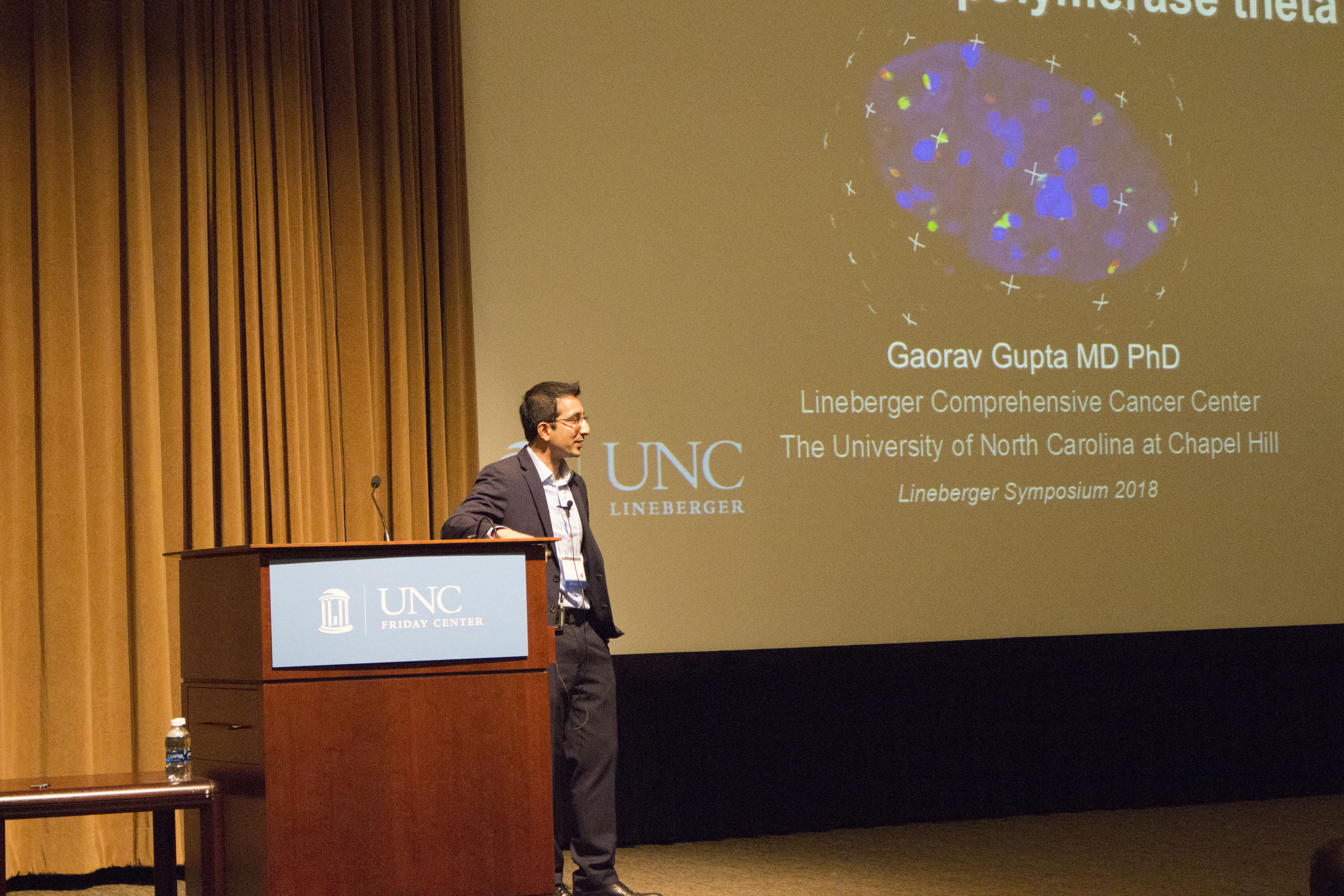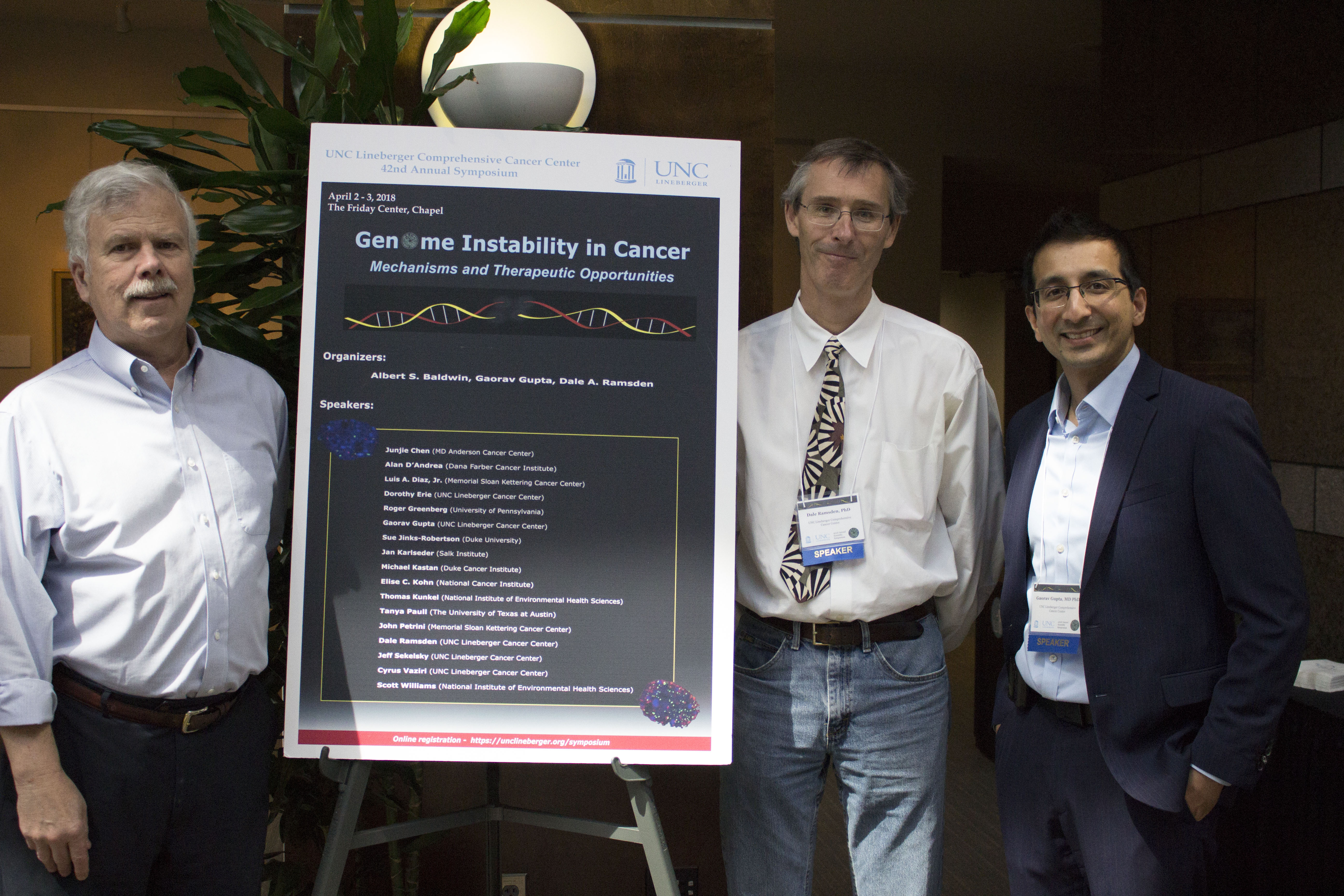

The 42nd Annual University of North Carolina Lineberger Comprehensive Cancer Center Scientific Symposium attracted more than 350 people to Chapel Hill April 2-3 to learn about the latest research into how DNA is repaired in normal cells, and how that knowledge is being used to fight cancer.
Since its inception, the symposium has generated the attention and attendance of scientists from around the world, said UNC Lineberger Director H. Shelton “Shelley” Earp, MD. When the symposium launched four decades ago under the leadership of Joseph S. Pagano, MD, UNC Lineberger director emeritus, he envisioned it as being free to students, trainees, the faculty and the public. The center has able to maintain this tradition, while bringing in top scientists year after year on important topics to cancer research, Earp said.
“This year’s topic of DNA repair went to the heart of cancer causation and therapy, featuring a great synthesis of fundamental basic molecular biology that leads all the way to clinical care,” Earp said. The event included presentations on the science of DNA damage and repair in normal cells and cancer, and efforts to identify ways improve the immune response to DNA damage when it occurs in tumors.
UNC Lineberger’s Gaorav Gupta, MD, PhD, assistant professor in the UNC School of Medicine Department of Radiation Oncology and Department of Biochemistry & Biophysics and a co-organizer of the symposium, presented research into a newly discovered method of DNA repair called “polymerase-theta-mediated end joining.” Multiple companies are investigating whether they can target this pathway as a cancer treatment approach, he said.
Gupta explained how the pathway helps to “rescue” another DNA repair mechanism when it’s malfunctioning, or “non-productive.”
Speaking to the symposium overall, Gupta said that many of the presentations highlighted research into the “next generation of ideas” that may come to the clinic.
“We saw a range of speakers, from scientists studying the underlying mechanisms regulating how broken bits of DNA get fixed and repaired, to others who are leveraging that information to help patients in the clinic,” said Michael J. Emanuele, PhD, UNC Lineberger member and assistant professor in the UNC School of Medicine Department of Pharmacology. “There are DNA-damaging agents being used already in the clinic that cause broken DNA in cancer cells. How can we make that damage a little worse? How are patients going to become resistant to these sorts of therapies? The answers to these questions are grounded in the molecular biology that happens in basic research labs, but then gets translated to improve patient outcomes.”
UNC Lineberger’s Dale Ramsden, PhD, professor in the UNC School of Medicine Department of Biochemistry and Biophysics, said his daughter is in ninth grade and taking AP biology. She’s learning about the “central dogma” of biology, which holds that the blueprint of life, DNA, is made into RNA, which is made into proteins. But Ramsden said there are exceptions to this, and “one of them is DNA repair.”
He described a discovery made in his laboratory that in some cases of DNA damage, small pieces of genetic code known as RNA – which is the code directly used to create proteins – are inserted for a brief period of time into the DNA to fix breaks in DNA during a process known as “non-homologous end-joining.”
The symposium has been hosted by UNC Lineberger since 1977, just two years after the National Cancer Institute formally recognized UNC Lineberger as a cancer center. Pagano, Lineberger Professor in Cancer Research, said he wanted the symposium to appeal to a broad audience, and he said this year’s event highlighted both basic research findings and clinically relevant science.
“The symposium, since the beginning, has attracted luminaries in science through the years, who clearly have themselves enjoyed presentations by their colleagues, as did the students, fellow and their faculty,” he said.
